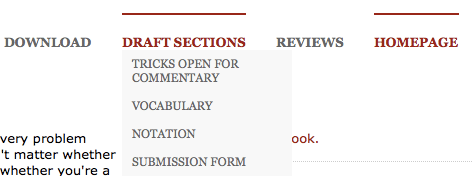Addressing the needs of students when they struggle haunts me. I am not only talking about students who may be working below grade, but any student who begins to stumble on a concept. At times even my best students have trouble on new topics. Currently, I use a Concepts Checklist, which is an altered version of SBG (Standards Based Grading) to identify this. However, I would ideally like to give additional support to students when they FIRST begin to have trouble, instead of trying to remediate when they are already behind or completely lost.
I read about using “red flags” in Robyn Jackson’s book “How To Support Struggling Students” while doing a book study with my amazing PLN (Professional Learning Network) of mathematics educators on Twitter. I immediately loved the idea of the red flag, but was worried about the negative connotation of a student receiving a “red flag”. I do not want the flag to be seen as a negative, a sign that a student is “not good” at math or “in trouble”. To give the flag a positive connotation, I decided to come up with a positive acronym for FLAG. Thanks to @fourkatie via Twitter, Fix Learning And Grow was born.
I do not plan to use FLAGs for purely academic reasons. I would like to give students a FLAG in any area where they can “Fix and Grow”. I plan on handing out flags for incomplete or missing homework, recurring misunderstandings in class, sloppy/incomplete notebooks, and excessive absences and tardies if they are having trouble making up the work.
UPDATE: I originally included disruptive behavior, but after some insightful comments, I rethought that and will NOT be including disruptive behavior in the FLAG system. I want to FLAG to focus on academics.
As teachers we do not have much time to implement an exhaustive new program. It must require low maintenance from me in order for it to be long-lasting. Thus, I am organizing the FLAG program to encourage independent learning. When I identify a need, I will place a flag on a students paper (or notebook). I will write the name of the FLAG on the flag. It is then the students responsibility to address their FLAG. The student will visit the FLAG page on our Wiki to read about their FLAG and see the steps they need to follow. The FLAGs are only temporary, and once they have addressed their need, their FLAG can be “waived”.
I think that this will save me time because a FLAG is quick and easy to write and hand out (post-it flags). I do not have to worry if an issue is serious enough to warrant a “talk” with a student or initiate a parent contact. I do not have to come up with “fixes” for the problem each time I do talk to a student. FLAG is a system that is already in place and ready to address many student needs, from the minor to the major.
I am still developing this idea and the overall FLAG system so I would LOVE any thoughts and feedback. Read more on my FLAG page on the wiki. Please help me make FLAGs better!












